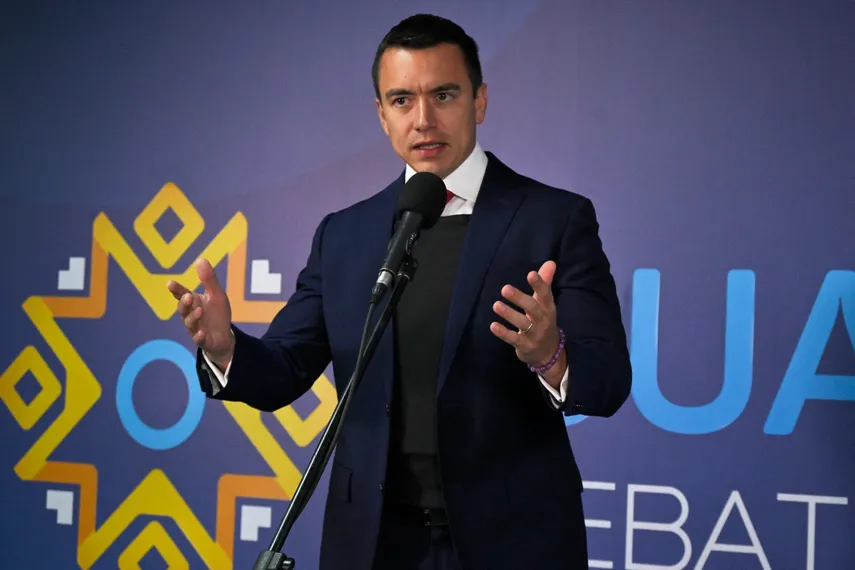In 2024, President-elect Daniel Noboa faces the formidable challenge of securing a staggering $10.5 billion to finance public spending and meet existing debt obligations. The escalating country risk further complicates his quest for foreign credit, as traditional avenues for borrowing become increasingly elusive.
Barclays, the British investment bank, has projected that Ecuador will need to borrow at least, a conservative estimate of $9.2 billion in 2024.
However, this figure may well be exceeded due to unforeseen factors like the El Niño Phenomenon or the imminent closure of the ITT oil block, a decision influenced by a prior popular consultation where Ecuadorians voted in favor of leaving oil untapped. Notably, Noboa had expressed support for the ITT closure during his electoral campaign.
Former Finance Minister Fausto Ortiz cautions against prematurely closing the ITT before the court-mandated deadline in August 2024. Ortiz emphasizes the need to evaluate how much additional funding Noboa will require to implement his government plan effectively.
How we got here
The pressing question arises: Why does Ecuador find itself in the position of needing substantial additional debt? Former Finance Minister Fausto Ortiz outlined that Ecuador requires around $5.5 billion in new external credits to cover escalating public spending. The existing revenue falls short of meeting financial commitments, resulting in a persistent imbalance where state expenditures consistently outpace income.
Walter Spurrier, director of Weekly Analysis, highlights the upward trajectory of government spending, particularly in bureaucracy salaries, which surged by $505 million until October 2023. This trend is anticipated to continue, underscoring the urgency for external financing.
Beyond addressing current spending, Noboa faces the responsibility of securing an additional $5 billion in external credits to service debts accumulated by previous administrations. The constrained fiscal landscape leaves the government with little choice but to incur further debt to meet its financial obligations.
However, the path to obtaining the necessary funds is fraught with challenges. Noboa’s potential to secure $6.5 billion through the renewal of internal debt, especially with the IESS, coupled with credits left by the previous administration, falls short of the required amount. Complicating matters, Ecuador has closed its doors to sovereign bond issuance due to the high country risk, exceeding 2,000 points, which would demand prohibitively high interest rates from investors.
Less than appetizing options
Spurrier suggests a potential, albeit contentious, solution—tapping into international reserves, totaling approximately $1.5 billion. However, such a move risks reducing liquidity, leading to import restrictions like taxes if the country is to maintain dollarization—a policy at odds with Noboa’s open economy stance.
Amid these challenges, there is a glimmer of hope in the form of a proposed $600 million from the International Monetary Fund (IMF) in 2023, with a similar volume anticipated for 2024. This rapid line of financing for natural disasters could provide a crucial lifeline if Noboa’s economic team acts swiftly.
Looking ahead to 2025, Arreaza warns of impending large debt payments, suggesting that Ecuador could leverage any available liquidity to buy back a portion of its debt at lower prices. This strategic move could instill confidence in investors and pave the way for the potential sale of state assets, such as Banco del Pacífico.
Noboa’s task of securing $10.5 billion in 2024 is a complex puzzle, necessitating a careful navigation of economic challenges and potential solutions to sustain Ecuador’s financial stability and economic growth. As he is surely thinking ahead to the next elections in 2025, any moves he makes have to leave him with enough support to keep his place in the Carondelet.


Could the expenses in salaries be reduced? Let’s start with the national assembly. El Universo had a list of all the extra benefits they receive, but no figure attached to them, so it is not easy to see how much money each of these people are collecting, many times doing nothing, or getting in the way of decent government policies. Do they get a pension for life, like the president and vice-president, too? Time to get rid of those. It is sad (and funny!) to see how so many groups (indigenous, GADs, etc.) are getting ready to ask for either what is owed them (Seguro Social) or the extra funds they would like. They do not seem to understand that the government does not have liquidity, not even for the basics,